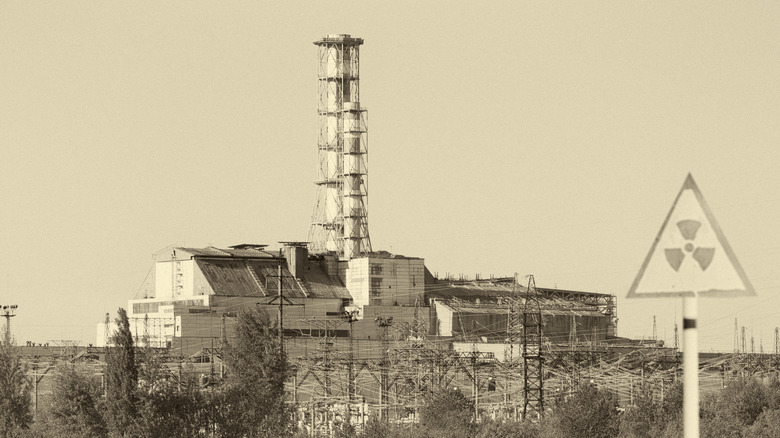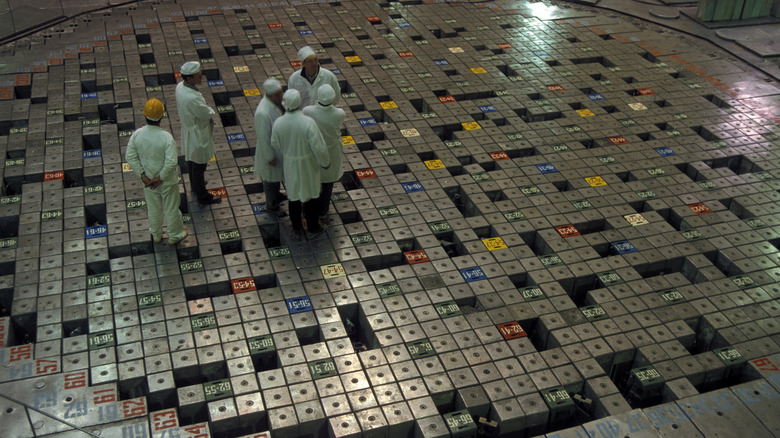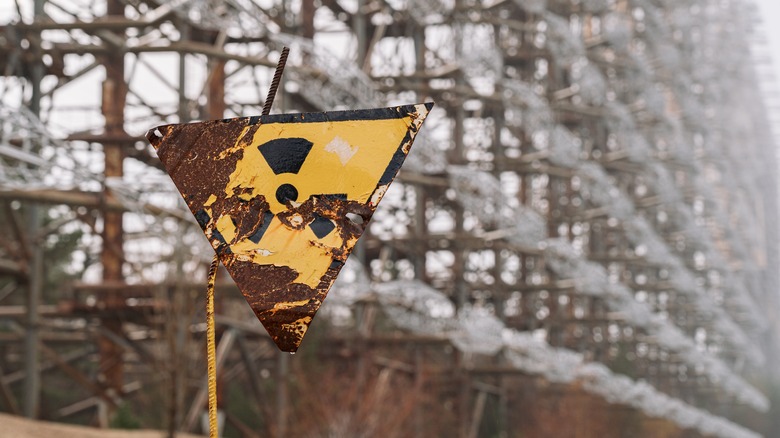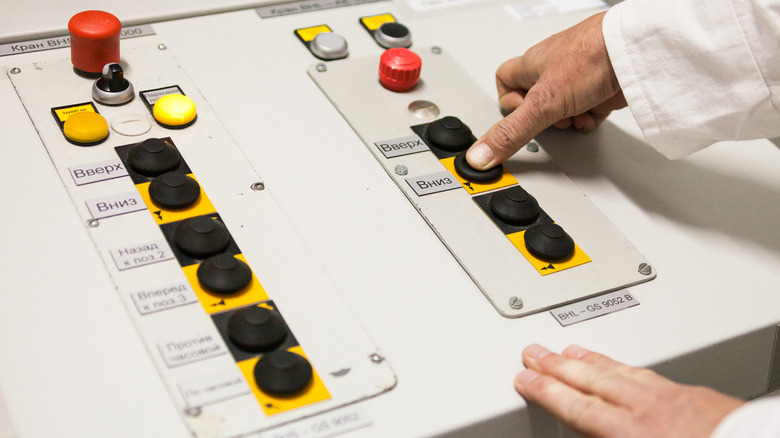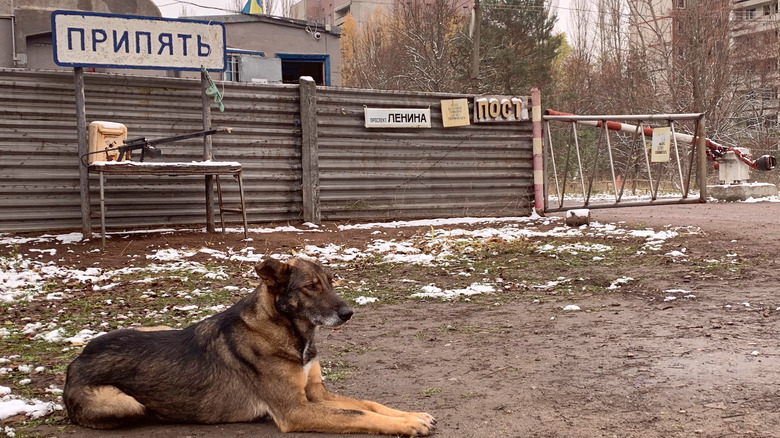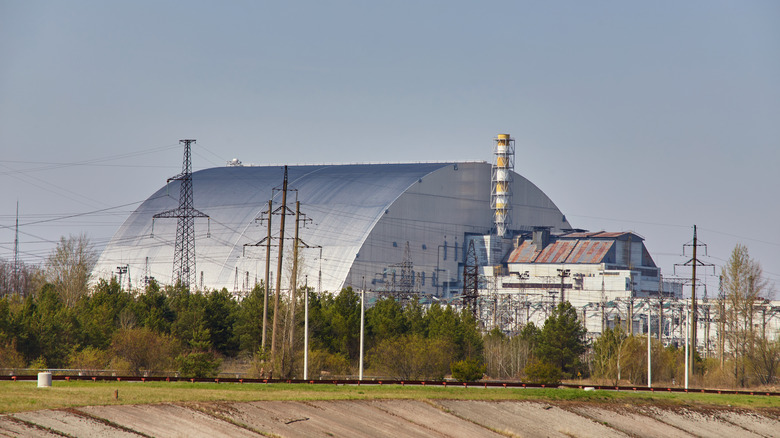Mistakes That Caused The Chernobyl Disaster
The Chernobyl disaster remains one of the most chilling incidents of the nuclear age. The Chernobyl Power Complex was the name of a nuclear power plant in northern Ukraine just a few miles from the Belarus border near the city of Pripyat. At the time Ukraine was part of the Union of Soviet Socialist Republics (USSR), and Chernobyl was constructed between 1970 and 1977 as part of the USSR's nuclear expansion program. It had four reactors, each capable of generating colossal amounts of energy to enrich the Soviet bloc. On April 26, 1986, a series of errors caused reactor 4 to experience an unexpected surge of power that started a huge fire, which led to several explosions and the biggest release of radioactive material into the atmosphere in history.
Local areas such as Pripyat were evacuated, but a delayed emergency response saw the area transformed into an uninhabitable no-go zone. It has been reported that 31 people lost their lives in the immediate aftermath of the meltdown, including six firefighters who received double the fatal amount of radiation as they attempted to extinguish the blaze. But a delayed response saw the amount of material released into the environment and spread across Ukraine, Belarus, Russia, and parts of Central Europe. Hundreds of thousands of people were involved in the clean-up, many of whom went on to develop health problems such as cancer as a consequence of the exposure. Here are some of the mistakes that led to the meltdown, and to the local area being largely uninhabited even today.
A flawed design
The World Nuclear Association notes that one of the key issues that led to the meltdown of Reactor 4 which resulted in the Chernobyl disaster of 1986 was the flawed design of the reactor itself. Each of Chernobyl's four reactors was of a new Soviet design known as "reaktor bolshoy moshchnosty kanalny," or RBMK. RBMK reactors were one of two reactor designs to emerge from the USSR in the 1970s. They employ a water-cooling system and graphite control rods that regulate fission, which creates nuclear energy.
On the night of the meltdown, operators were attempting to test whether residual steam pressure would be able to keep the reactor going in the event of a power cut long enough for the backup diesel generators to take over. However, in the course of the experiment, a huge and unexpected power surge hit the reactor, which was later found to have been caused by the RBMK's enormous "void coefficient," ultimately meaning that excess steam in the water cooling system would not be able to absorb neutrons in the system, resulting in the surge. After an investigation into these flaws, crews were tasked with upgrading other reactors in the Chernobyl Power Complex to make them safer, though over the years these other reactors have also eventually been decommissioned.
Safety issues covered up
But the flaws in the design of the RBMK-1000 reactor at Chernobyl that rendered it unsafe weren't exactly a surprise to experts in the wake of the meltdown. In fact, the site had suffered several notable accidents and emergencies years before the shocking events of April 1986. But as we know now, those in charge of the Soviet nuclear program sought to cover up evidence that their reactors were unsafe, meaning that they continued to be operated despite such safety issues leading to the worst nuclear accident in history.
According to a 2021 report published by Reuters, it was revealed that the side had a radiation leak as early as 1982 and that numerous accidents occurred at the plant in 1984. The Soviet government was reportedly aware of the truth that Chernobyl was fundamentally unsafe as a power plant as early as 1983 but kept the matter a secret from the public.
The same instinct among the Soviet powers that be to cover their tracks led to their delayed order to evacuate the city of Pripyat until about Chernobyl 36 hours after the meltdown began, ultimately exposing thousands of locals to dangerous levels of radiation.
Inadequate training
The nuclear operators on-site at the Chernobyl Power Complex were later identified as lacking in adequate training required to keep such a complicated and cutting-edge power station running effectively and safely. In the years following the devastating nuclear meltdown, the operators themselves were afforded a great deal of blame for the disaster in which many of them lost their lives.
Indeed, the experiment that the Chernobyl nuclear operators were performing on the night of the meltdown was flawed as a result of human error, which largely came down to the team's lack of understanding of the reactor's internal systems. None of them expected the surge of power that the experiment unleashed. The experiment itself was later reported to have been unauthorized, though plant director Viktor Bryukhanov, chief engineer Nikolai Fomin, and his deputy, Anatoly Dyatlov later received 10-year prison sentences for the disaster. Official Soviet government reports claimed that the operators, three more of whom were given prison sentences, had been negligent.
No safety culture
The lack of training that the operators were afforded resulted from what is now known to have been an almost complete lack of safety culture at the Chernobyl Power Complex, a characteristic of Soviet industry more generally at the time. No interest in maximum design accidents, hypothetical disasters that could then be mitigated against in design features, were of little interest to commissioners or designers of the RBMK-1000 reactor, who were also looking to reduce costs.
The safety of Chernobyl was further impacted by opacity within the Soviet hierarchy, which prevented subordinates from reporting issues and misgivings to their superiors, leading to a culture of silence in which errors were not course-corrected. Similarly, mistakes, including those around safety, were covered up, rather than treated as lessons to be learned from. "The attitude came from the race for the atomic bomb, "Chernobyl: History of a Tragedy writer Sehii Plokhy writer told The Guardian in 2018. "The sacrifice of health and life was almost expected. That culture was transferred to the nuclear power establishment."
A lack of safety features
The lack of safety features at Chernobyl Reactor 4 started with the design of the reactor itself. Absent from the RBMK-1000 was a pre-existing containment structure — a common feature of Western nuclear reactor designs — that would mitigate the effects of a meltdown. The design also lacked instrumental and control devices with which to adequately monitor the core.
Further safety features were overlooked as director Viktor Bryukhanov, who was also in charge of the setting up of the reactors as well as providing accommodation for the operators, raced to keep the project on track. The science journal Nature reports that under his direction electric cables were installed without the required fire-resistant cladding, just one instance of the corners that were cut in the creation of the plant despite the potential calamity that might occur were something to go wrong with any of its reactors.
A lax attitude to safety continued even after the meltdown and the delayed evacuation of local people from the area around the site as it grew more and more radiated and became a danger to human life. In the aftermath, an international effort saw a concrete "sarcophagus" erected around the reactor intended to stop the spread of further radiation. However, the structure was only intended to be temporary and still requires a permanent solution to this day, with experts claiming that it and other stores of radioactive material from the world's worst nuclear disaster constitute an ongoing risk to public safety if not adequately maintained.
